 W
WIn North American music, adult contemporary music (AC) is a form of radio-played popular music, ranging from 1960s vocal and 1970s soft rock music to predominantly ballad-heavy music of the present day, with varying degrees of easy listening, pop, soul, R&B, quiet storm, and rock influence. Adult contemporary is generally a continuation of the easy listening and soft rock style that became popular in the 1960s and 1970s with some adjustments that reflect the evolution of pop/rock music.
 W
WThe term backline is used in popular music and sound reinforcement system contexts to refer to electronic audio amplification equipment and speaker enclosures that are placed behind the band or the rhythm section on stage, including amplifiers and speaker cabinets for guitars, bass guitars and keyboards. Such equipment is often rented or leased by the band or their management, or provided by the venue. Speakers placed at the front of the stage facing the performers are also known as monitor speakers or "foldback". The main speakers facing the audience are sometimes referred to as "front of house speakers".
 W
WA rock band or pop band is a small musical ensemble that performs rock music, pop music, or a related genre. A four-piece band is the most common configuration in rock and pop music. In the early years, the configuration was typically two guitarists, a bassist, and a drummer. Another common formation is a vocalist who does not play an instrument, electric guitarist, bass guitarist, and a drummer. Instrumentally, these bands can be considered as trios. Sometimes, in addition to electric guitars, electric bass, and drums, also a keyboardist plays.
 W
WIn music and music theory, the beat is the basic unit of time, the pulse, of the mensural level. The beat is often defined as the rhythm listeners would tap their toes to when listening to a piece of music, or the numbers a musician counts while performing, though in practice this may be technically incorrect. In popular use, beat can refer to a variety of related concepts, including pulse, tempo, meter, specific rhythms, and groove.
 W
WBikutsi is a musical genre from Cameroon. It developed from the traditional styles of the Beti, or Ewondo, people, who live around the city of Yaoundé. It was popular in the middle of the 20th century in West Africa. It is primarily dance music.
 W
WContemporary Christian music is a genre of modern popular music which is lyrically focused on matters concerned with the Christian faith. It formed as those affected by the 1960s Jesus movement revival began to express themselves in a more contemporary style of music than the hymns, Gospel and Southern gospel music that was prevalent in the church at the time. Today, the term is typically used to refer to pop, rock, or praise and worship styles.
 W
WIn popular music, a cover version, remake, cover song, revival, or simply cover, is a new performance or recording by someone other than the original artist or composer of a song.
 W
WDance music is music composed specifically to facilitate or accompany dancing. It can be either a whole musical piece or part of a larger musical arrangement. In terms of performance, the major categories are live dance music and recorded dance music. While there exist attestations of the combination of dance and music in ancient times, the earliest Western dance music that we can still reproduce with a degree of certainty are the surviving medieval dances. In the Baroque period, the major dance styles were noble court dances. In the classical music era, the minuet was frequently used as a third movement, although in this context it would not accompany any dancing. The waltz also arose later in the classical era. Both remained part of the romantic music period, which also saw the rise of various other nationalistic dance forms like the barcarolle, mazurka, ecossaise, ballade and polonaise.
 W
WA drop or beat drop in music, made popular by electronic dance music (EDM) styles, is a point in a music track where a sudden change of rhythm or bass line occurs, which is preceded by a build-up section and break.
 W
WThe Éditions Mélanie Seteun are a publishing association dedicated to "taking popular music seriously, especially within the French-speaking world. They publish Volume! the French Journal of Popular Music Studies, book collections, and participate in several activities promoting their field of study in France.
 W
WAn electronic musical instrument is a musical instrument that produces sound using electronic circuitry. Such an instrument sounds by outputting an electrical, electronic or digital audio signal that ultimately is plugged into a power amplifier which drives a loudspeaker, creating the sound heard by the performer and listener.
 W
WFilmi music soundtracks are music produced for India's mainstream motion picture industry and written and performed for Indian cinema. In cinema, music directors make up the main body of composers; the songs are performed by playback singers and the genre represents 72% of the music sales market in India.
 W
WThe Global Recording Artist of the Year is an award presented by the International Federation of the Phonographic Industry (IFPI) to honor the best-performing recording artist based on a total of album-equivalent units, which include music downloads, streaming and physical format sales. It has been awarded every year since January 2014, with British boy band One Direction becoming the first act to receive the accolade for Global Recording Artist of 2013. This success was attributed to the band's third studio album, Midnight Memories, which became the best-selling album of the year with sales of four million copies worldwide. Taylor Swift was awarded the Global Recording Artist of 2014 after the commercial success of her fifth studio album, 1989. During the year, the album became the second global bestseller with sales of six million copies and spawned two international number-one singles, "Shake It Off" and "Blank Space".
 W
WThis is a list of jazz and popular music terms that are likely to be encountered in printed popular music songbooks, fake books and vocal scores, big band scores, jazz, and rock concert reviews, and album liner notes. This glossary includes terms for musical instruments, playing or singing techniques, amplifiers, effects units, sound reinforcement equipment, and recording gear and techniques which are widely used in jazz and popular music. Most of the terms are in English, but in some cases, terms from other languages are encountered.
 W
WIn music, groove is the sense of an effect ("feel") of changing pattern in a propulsive rhythm or sense of "swing". In jazz, it can be felt as a quality of persistently repeated rhythmic units, created by the interaction of the music played by a band's rhythm section. Groove is a significant feature of popular music, and can be found in many genres, including salsa, rock, soul, funk, and fusion.
 W
WAn illustrated song is a type of performance art and was a popular form of entertainment in the early 20th century in the United States.
 W
WIn popular music genres such as country, blues, jazz or rock music, a lick is "a stock pattern or phrase" consisting of a short series of notes used in solos and melodic lines and accompaniment. Licks in rock and roll are often used through a formula, and variations technique in which variants of simple, stock ideas are blended and developed during the solo.
Mor lam sing is a fast-paced, racy and modernized version of the traditional Lao/Isan song form mor lam . Sing comes from the English word "racing". In this style, the lead singer is accompanied by the khaen, Western drums, electric guitar, electric keyboards and bass guitar. The style was invented in Chaiyaphum province around 1985 and was popularised over the next few years after it was taken up by Ratdri Sivilai in Khon Kaen. It is based on the Khon Kaen style of lam tang san but incorporates string instrumentation and luk thung singing styles and extensive use of the Central Thai language rather than Isan.
 W
WA multi-instrumentalist is a musician who plays two or more musical instruments at a professional level of proficiency.
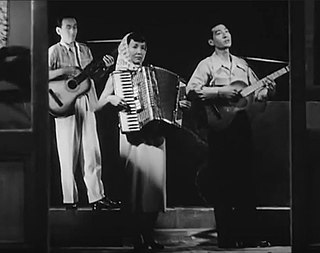 W
WNakasi or Nagashi is a traditional popular music form in Japan and Taiwan, most stereotypically associated with elements of working-class culture such as the old tea parlors and drinking bars. One explanation supposes that the word describes the migratory lifestyle of Nakasi musicians, who traditionally travelled from one tea parlor to another.
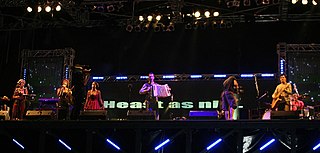 W
WNeue Volksmusik describes the crossover mix of traditional German folk music (Volksmusik) with newer genres such as jazz, contemporary folk, electronic music, and/or rock.
 W
WNorthwest Wind is a style of music which emerged on the popular music scene in mainland China from the northwestern or xibei portion of China specifically from the Shanxi, Shaanxi and Gansu provinces. The style is a western-style fast tempo, strong beat and extremely aggressive bass lines that is distinctly different from cantopop or mandopop from Hong Kong and Taiwan respectively. It later evolved into Chinese Rock in the late 1980s.
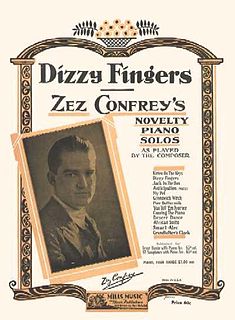 W
WNovelty piano is a genre of piano and novelty music that was popular during the 1920s.
 W
WA novelty song is a type of song built upon some form of novel concept, such as a gimmick, a piece of humor, or a sample of popular culture. Novelty songs partially overlap with comedy songs, which are more explicitly based on humor. Novelty songs achieved great popularity during the 1920s and 1930s. They had a resurgence of interest in the 1950s and 1960s. The term arose in Tin Pan Alley to describe one of the major divisions of popular music; the other two divisions were ballads and dance music. Humorous songs, or those containing humorous elements, are not necessarily novelty songs.
 W
WRaï, sometimes written rai, is a form of Algerian folk music that dates back to the 1920s. Singers of Raï are called cheb as opposed to sheikh, the name given to Chaabi singers. The tradition arose in the city of Oran, primarily among the poor. Traditionally sung by men, by the end of the 20th century, female singers had become common. The lyrics of Raï have concerned social issues such as disease and the policing of European colonies that affected native populations.
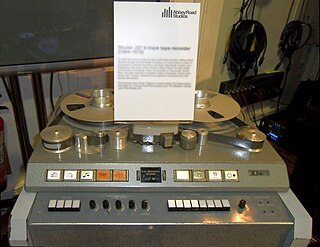 W
WIn music production, the recording studio is often treated as a musical instrument when it plays a significant role in the composition of music. Sometimes called "playing the studio", the approach is typically embodied by artists or producers who favor the creative use of studio technology in completing musical recordings, as opposed to simply capturing live performances in studio. Techniques include the incorporation of non-musical sounds, overdubbing, tape edits, sound synthesis, audio signal processing, and combining segmented performances (takes) into a unified whole.
 W
WIn music performances, rhythm guitar is a technique and role that performs a combination of two functions: to provide all or part of the rhythmic pulse in conjunction with other instruments from the rhythm section ; and to provide all or part of the harmony, i.e. the chords from a song's chord progression, where a chord is a group of notes played together. Therefore, the basic technique of rhythm guitar is to hold down a series of chords with the fretting hand while strumming or fingerpicking rhythmically with the other hand. More developed rhythm techniques include arpeggios, damping, riffs, chord solos, and complex strums.
 W
WA rhythm section is a group of musicians within a music ensemble or band that provides the underlying rhythm, harmony and pulse of the accompaniment, providing a rhythmic and harmonic reference and "beat" for the rest of the band. The rhythm section is often contrasted with the roles of other musicians in the band, such as the lead guitarist or lead vocals whose primary job is to carry the melody.
 W
WThe appearance of Ronald Reagan in music includes mentions and depictions of the actor-turned-politician in songs, albums, music videos, and band names, particularly during his two terms as President of the United States. Reagan first appeared on a few album covers during his time as a Hollywood actor, well before his political career. During the 1960s, folk, rock, and satirical musicians critiqued Reagan in his early years as Governor of California for his red-baiting and attacks on Berkeley's Free Speech Movement. In the 1980s songs critiquing Reagan became more widespread and numerous once he ascended to national office and involved himself in the renewal of the Cold War, the nuclear arms race, social conservatism, right-wing evangelicalism, and his economic policies in relation to low-income people. While references to Reagan during his presidency appear in pop music, his presence in song lyrics and on album covers is often associated with the hardcore punk counter-culture of the 1980s.
 W
WRussian chanson is a neologism for a musical genre covering a range of Russian songs, including city romance songs, author song performed by singer-songwriters, and blatnaya pesnya or "criminals' songs" that are based on the themes of the urban underclass and the criminal underworld.
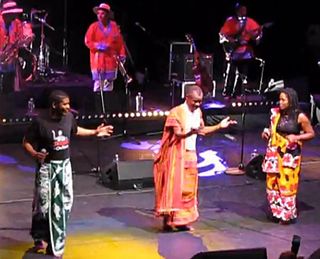 W
WSalegy [ˈsaleɡʲ] is a popular music genre from Madagascar. Originating as a Sub-Saharan African folk music style in the northwestern coastal areas of Madagascar, modern salegy is the genre of Malagasy music that has gained the widest recognition and commercial popularity in the international market. Its sound is considered emblematic of the island. Eusèbe Jaojoby, a Sakalava singer from Anboahangibe, was a key originator of the style and is widely considered the "King of Salegy".
 W
WSawt is a kind of popular music found in Kuwait and Bahrain. Sawt is a complex form of urban music, originally performed by 'ud and mirwas, with a violin later supplementing the arrangement.
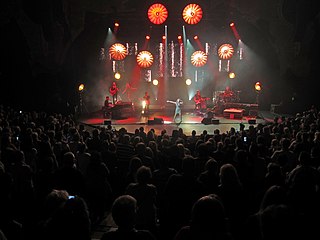 W
WSchlager music is a style of European popular music that is generally a catchy instrumental accompaniment to vocal pieces of pop music with simple, happy-go-lucky, and often sentimental lyrics. It is prevalent in Central, Northern and Southeast Europe, and also in France, Belgium, the Netherlands, and the UK. In the United States it is also known as 'entertainer music' or 'German hit mix'.
 W
WThe Schöneberger Sängerknaben were a German boys' choir from Berlin, named after the Bezirk Schöneberg. The choir performed with about 30 boys at a time. They wore short black trousers, black blazers with emblems, white shirts and white knee socks. The repertoire initially included German folk songs, Berlin popular songs and Schlager, later also opera choruses and other classical works.
 W
WSession musicians, studio musicians, or backing musicians are musicians hired to perform in recording sessions or live performances. The term sideman is also used in the case of live performances. Session musicians are usually not permanent members of a musical ensemble or band. They work behind the scenes and rarely achieve individual fame in their own right as soloists or bandleaders. However, top session musicians are well known within the music industry, and some have become publicly recognized, such as the Wrecking Crew, the Muscle Shoals Rhythm Section and The Funk Brothers who worked with Motown Records.
 W
WWhile the sitar had earlier been used in jazz and Indian film music, it was from the 1960s onwards that various pop artists in the Western world began to experiment with incorporating the sitar, a classical Indian stringed instrument, within their compositions.
 W
WTin Pan Alley is the name given to a collection of New York City music publishers and songwriters who dominated the popular music of the United States in the late 19th century and early 20th century. It originally referred to a specific place: West 28th Street between Fifth and Sixth Avenues in the Flower District of Manhattan; a plaque on the sidewalk on 28th Street between Broadway and Sixth commemorates it. In 2019, the New York City Landmarks Preservation Commission took up the question of preserving five buildings on the north side of the street as a Tin Pan Alley Historic District. The agency designated five buildings individual landmarks on December 10, 2019, after a concerted effort by the "Save Tin Pan Alley" initiative of the 29th Street Neighborhood Association.
 W
WWomen in rock describes the role of women singers, instrumentalists, record producers and other music professionals in rock music and popular music and the many subgenres and hybrid genres that have emerged from these genres. Women have a high prominence in many popular music styles as singers. However, professional women instrumentalists are uncommon in popular music, especially in rock genres such as heavy metal. "[P]laying in a band is largely a male homosocial activity, that is, learning to play in a band is largely a peer-based... experience, shaped by existing sex-segregated friendship networks. As well, rock music "...is often defined as a form of male rebellion vis-à-vis female bedroom culture."